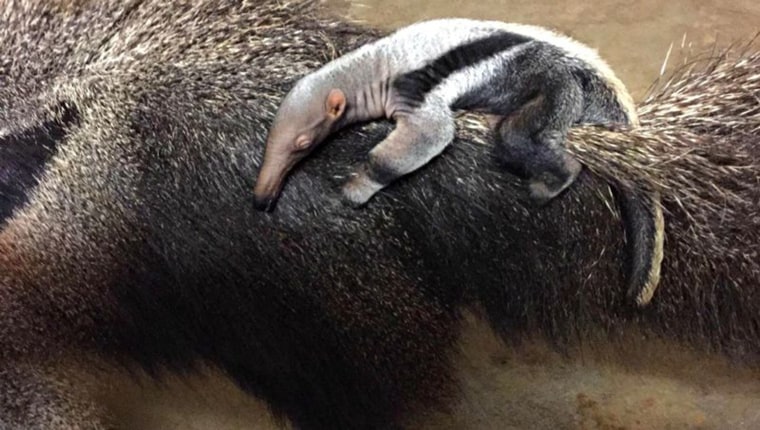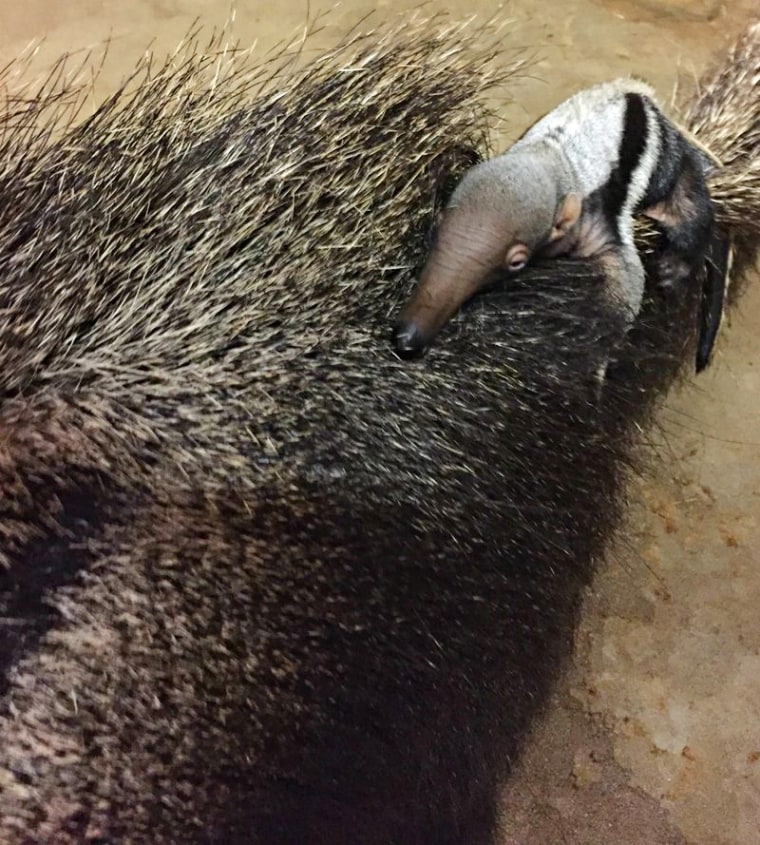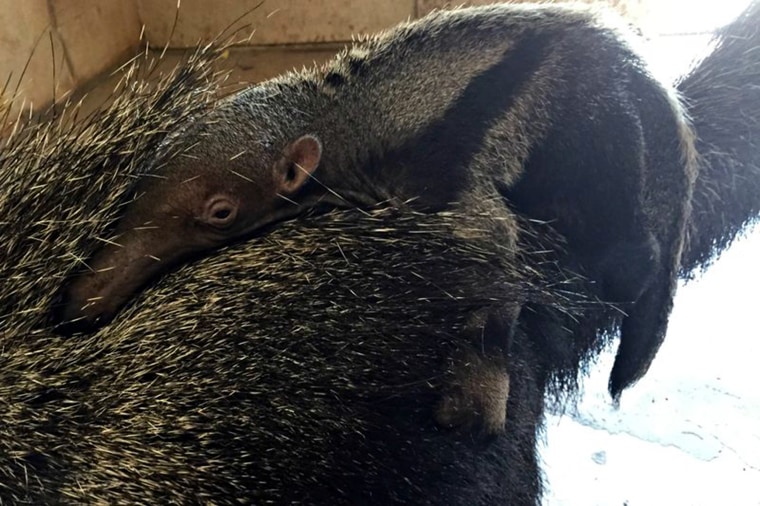
Zoo Boise is happy to announce the birth of a giant anteater pup. The baby was born July 6 and is now starting to venture outside with its mother, Gloria. After a few weeks of privacy inside their barn, the two anteaters are starting to explore their outdoor exhibit for short periods of time and may be viewable to zoo visitors.


With the exception of mothers with offspring, anteaters are generally solitary animals. Anteater dad, McCauley, can be found in a separate exhibit next to Gloria and their pup. Keepers will verify the sex of the pup during its first veterinarian exam. After that, they will decide upon a name for the new anteater.
During their first year, giant anteater pups will spend much of their time riding on their mothers’ backs. Born with a full coat of fur, the pup is able to blend in with its mother so that predators cannot easily see it. The pup will stay with its mother until it is full grown, between one and two years of age.
Also known as the ant bear, the giant anteater is a large insectivorous mammal native to Central and South America. It is one of four living species of anteaters and is classified with sloths in the order Pilosa. The species is mostly terrestrial, in contrast to other living anteaters and sloths, which are arboreal or semi arboreal.
The giant anteater can be found in multiple habitats, including grassland and rain forest. It forages in open areas and rests in more forested habitats. It feeds primarily on ants and termites, using its fore claws to dig them up and its long, sticky tongue to collect them. They can eat up to 30,000 insects in one day! Though giant anteaters live in overlapping home ranges, they are mostly solitary.
The species is the largest of its family: 5.97 feet to 7.12 feet in length and weighing as much as 73 pounds to 90 pounds for males, and 60 pounds to 86 pounds for females. The giant anteater is recognizable by its elongated snout, bushy tail, long fore claws and distinctively colored fur.
This story first appeared on ZooBorns.com.